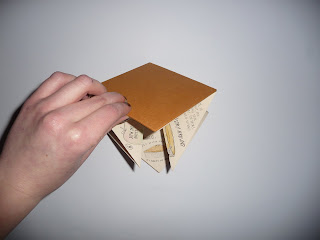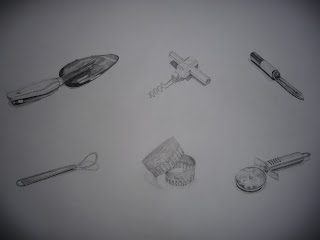Thursday 24 February 2011
Book Project
Monday 14 February 2011
Wednesday 2 February 2011
contextual studies
Ian Wright is an illustrator who goes for the less obvious approach in his commissioned work. His work seems to rarely involve the use of pencil and paper. Instead, he is continually pushing the boundaries in what materials can be used to produce an image, from torn paper to mascara brushes, he has produced pieces of art which stand out as being incredibly unique and eye catching.
Mr Wright began his career after graduating in Graphic Design at the London College of Printing. He was first hired by the NME magazine (“New Music Express”) and was expected to produce one drawing a week. He had always had a keen interest in music which stemmed from his childhood. Working here was a huge learning curb for him, as he learnt about the importance of a fast turn-around in his work. Mr Wright also learnt how images are produced in print so could understand the limitations in how he needed to work. He drew many interesting images for this work, including the use of text to illustrate a portrait. He also took an interest in the importance of the layout of an article. For example, when illustrating the image of John Cooper Clarke, Ian Wright knew that he was tall and thin and so that was exactly how he wanted to display the article, tall and thin. His experience working for this magazine allowed him to decide that this was a career path which he wanted to pursue.
Well famed for his portraits of musicians from the NME, he now works as a freelance illustrator. Portraiture is his preferred type of work, particularly of individuals he feels strongly about and music is one of his strong interests. After his first job, his artwork became much more experimental.
Ian Wright finds it necessary to explore and be inventive with the mediums used in his work. His official websites includes a statement which explains his approach perfectly, “Playfulness is important to me; I’m motivated by trying to push my work somewhere new, somewhere else. Really, I’m interested in what could be. I sometimes reach that point by making mistakes and generally misusing technology and I often arrive at solutions by accident. I prefer to let materials I use influence the outcome.”
There are plenty of examples of this ‘playfulness’, such as his “1000 Lashes”, which was a commission for ‘Black Book magazine’. The criteria he had to meet were the theme of protest and he also needed to involve beauty products. He looked at civil rights campaigner, Angela Davis, and decided on creating a portrait of her. In keeping with the criteria, and also his inventive style, he used mascara brushes to illustrate the portrait. This approach was extremely successful. Unfortunately, the final piece was not permanent, as the brushes were simply stuck onto board with blue-tac.
Mr Wright has shared 9 studios with 68 studio mates. At a time, he was sharing a studio with Neville Brody, who had been asked to create an image for the Issey Miyake in New York. The budget was $10,000, which presented a challenge as it was intended to be a large display. Ian Wright went over to look at this commission with an idea. The work “Ghost Gorilla” was to be presented and in a way to enlarge this image and to keep to the budget, paper cups were used to create it which was similar to the original idea of using beads.
From Mr Wright’s range of portraits of musicians, there are some which stand out to me as amazing, innovative pieces of art. The portrait of Jimi Hendrix is extremely clever, as he used his trusted and well developed technique of using beads. However, he didn’t arrange the beads in a grid. Instead, the beads were in much more random positions. I personally find this technique more effective.
My favourite piece of his art has to be the portrait of T.I. Ian Wright was spotted by Art Director Greg Burke, and he wanted him to produce an album cover for T.I’s sixth album “paper trail”. With an album name such as this, it seemed the perfect opportunity for Ian Wright to demonstrate his inventive approach to portraiture. He used all sorts of torn paper which had been found around and about. The final piece can only be described as a masterpiece. The piece was so impressive that, initially, nobody believed it to be hand done and thought Photoshop had been used. It wasn’t until a photo was taken, showing all the leaves of paper, that people saw it to be untouched by technology.
For an artist’s work to be doubted by an audience in this way is proof to me of just how talented and creative Ian Wright really is.
Subscribe to:
Posts (Atom)


























